St Joseph’s Convent, once commonly called the Waltair Convent, is the home of the French Order of the Sisters of St Joseph of Annecy (Eglise des Souers de Saint-Joseph D’Annecy) since 1898 and is today, the site of the St Joseph’s Girls High School and Women’s College in Vizag.
Vizag’s first Catholic Vicar General, Rev Neyret of the Missionaries of St Francis de Sales, identified an early need for a community of nuns to work among the girls and women of the Vizag Mission and wrote to Mother Aloysius in Annecy telling them of all the good work that could be done by the nuns. The first four sisters bound for Vizag boarded the vessel Domblet on 13 July 1849 and arrived in Pondicherry on 19 October. In 1851, the ship Marseille sailed directly to Vizag with six St Joseph Sisters on board and with Mother St Jean Boissat as the new leader for their work in India. By 1862, up to 24 sisters had arrived for the Vizag Mission.
When the first Sisters from the Congregation of St Joseph of Annecy in France arrived in Vizagapatam, they stayed at the Fort Convent which was a bungalow adjacent to St Aloysius School and was made available by Rev Tissot who had started building St Aloysius and St Anne’s at that time. The new Cathedral of St Anne’s was consecrated on 8 December 1854 in time to accommodate the increased number of nuns who moved from the Fort Convent. They started the first school for girls in the cathedral. There was a demand for more girls’ schools, firstly in the Fort for the children of soldiers and also for the expanding families of Waltair. The Fort Catholic Girls School was started in 1883.
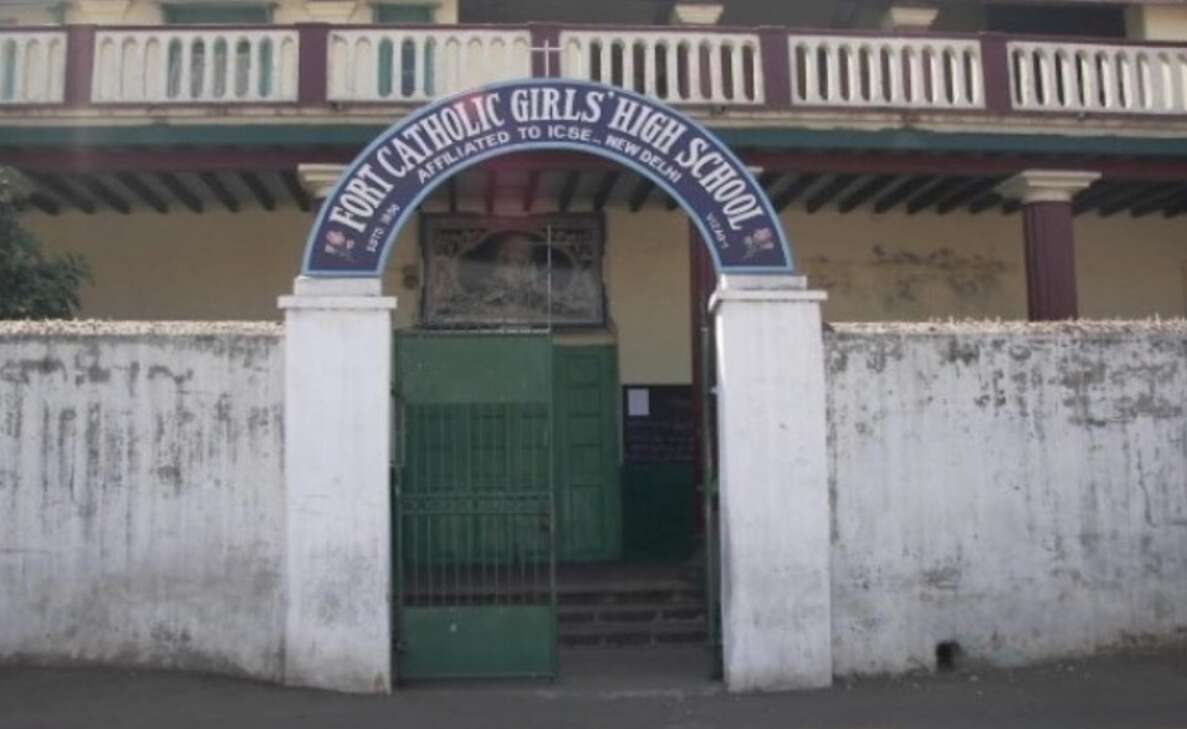
On 27 May 1884, Bishop Tissot bought the bungalow of Mrs. Sarah Shreeve to use as a school building and convent. Classes for standards 1 and 2 were started there in 1884. Daughters of European soldiers were the first enrolments of 20 students mainly from the Old Post Office and Jalarapet areas. The next year, 1885, standard 3 and nursery were added with an Anglo-Indian teacher employed at Rs 5 per month. By 1900, there were 250 girls and classes up to 7th standard with girls from all religious communities and the education of Telugu girls was supported by the aristocratic families of Vizag. At this stage, the government-sanctioned funds as part of the Grant-In-Aid educational development program in the Madras Presidency. By 1940, the school had 500 girls studying up to 10th standard. The Fort Convent and the Waltair Convent were firstly supported by Sri Janakiyamma also known as Mrs. Goday Surya Prakasa Rao and followed by Ratnamma, wife of GL Narsinga Rao Garu, Zamindar of Anakapalli. The school was also well patronised by the Rajahs of Jeypore and Vizianagaram.
In about, 1850, the west of old Vizag town, was a vast tidal swamp of about 3,000 acres, which was occasionally drained through a narrow channel near Dolphin’s Nose Hill. During monsoon, it was a muddy backwater strewn with animal carcasses and half-burnt human corpses from the nearby Hindu cremation site. Mr Warfield, a veteran soldier, had 79 acres of high ground on which he tried to establish some crops with the aid of bunds and dykes to control the water. He sold this plot to the Missionaries of St Francis de Sales in 1867 for Rs 400. Rev Tissot was able to have another 1,614 acres granted to the MSFS by the government with the specific aim of establishing reclamation works. Huts were built for the coolies and a small chapel, St Joseph’s, was constructed. Priests and students from St Aloysius were regular visitors to assist in improving the grounds and enjoying a farm-like setting with date palms, cashew trees, mango groves and buffalo, cows and goats grazing.
This pleasant garden was destroyed in the violent cyclone of 1870 that reduced the earthworks to a swamp again. The MSFS decided to rebuild the site and bought additional land on either side of the road to Simhachalam, building another chapel and named the new village Gnanapuram (village of wisdom) in 1872. The coolies were a ready source of converts, they were paid for their work and had the additional benefit of medical attention from the Sisters of St Joseph. This was particularly beneficial during times of famine and pandemics when the population of Vizag swelled from people seeking relief. The construction of the railway in the 1890s resulted in some of the land being requisitioned by the Government, The MSFS bought 10 acres adjacent to the railway station to build a convent and school for the Sisters of St Joseph which started in 1893 under the supervision of Bro Nicholas Page, with the nuns occupying the first wing in 1898.
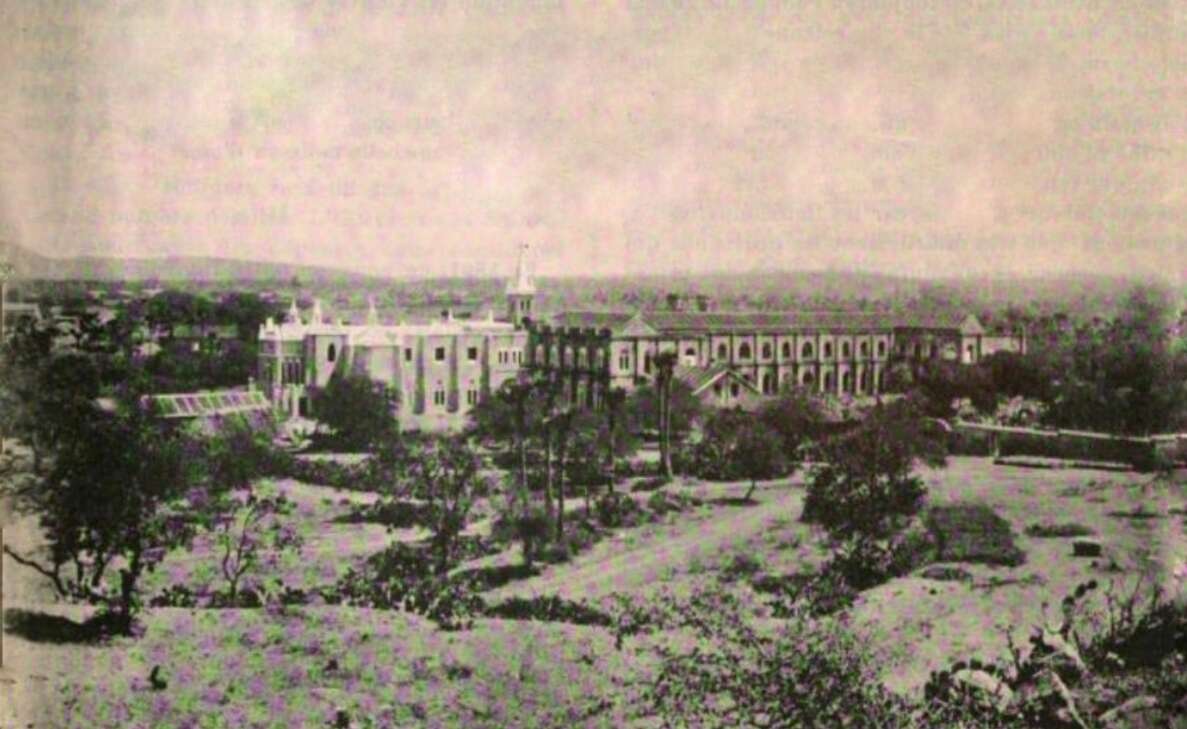
The foundation stone for the Waltair Convent’s Chapel was laid by Bishop Clerc in 1893 but was not completed until 1901 due to lack of funds. Built of chunam and stone, the chapel, measured 84 feet long and 42 feet wide, had a nave of 34 feet and a steeple on the belfry 50 feet high. Construction was supervised by Rev Fr A Cyrille, with three altars and a choir stall, its arches and columns are decorated with wreaths and flowers. The bell was cast in France by F Paccard, was sponsored by Mr & Mrs Lemerchant and was donated by Mr A Reardon.
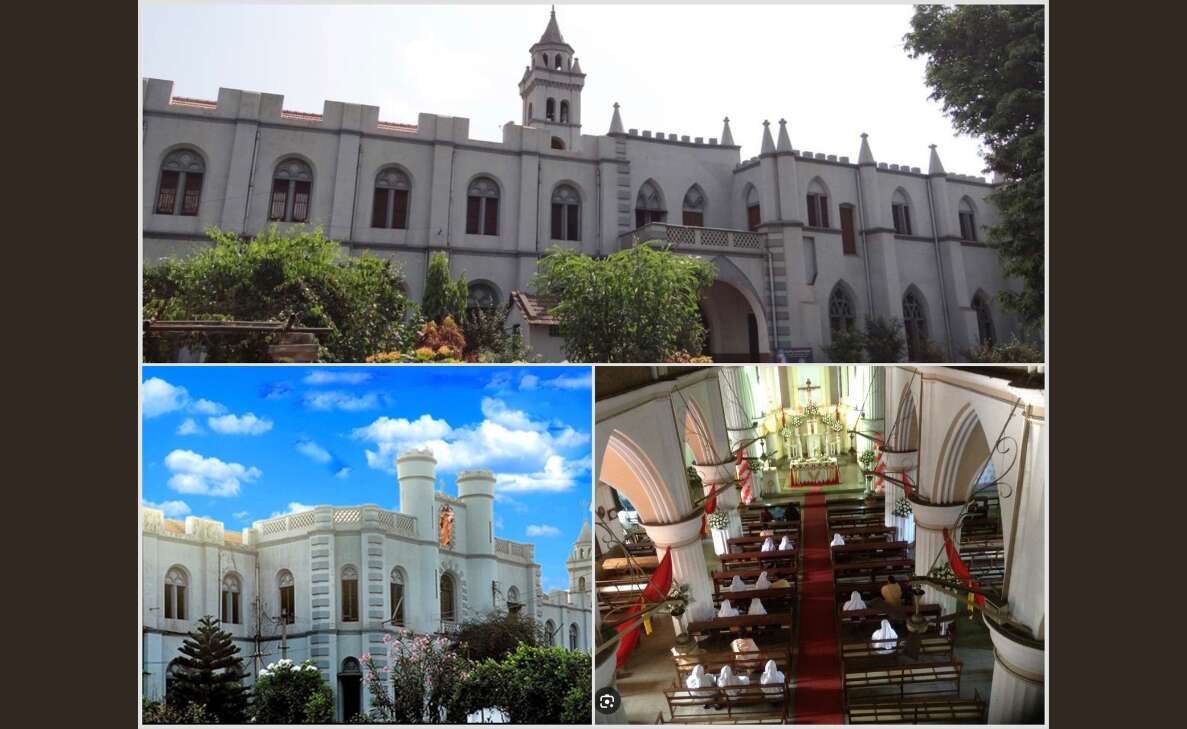
St Joseph’s Convent grew as the centre of the Gnanapuram community, especially as the population of Vizag swelled during times of famine and pandemics and the Sisters of St Joseph were the source of charity, food, education and medical attention.
In 1922, the Sisters of St Joseph started a Lacework School at Waltair Convent to train women who were without work and widows living in poverty. During those days, women were not allowed to go out to seek any employment. Lacework was attractive to the women as they saw how it added beauty to houses, windows, cupboards, almirahs etc. The Sisters encouraged women to prepare lacework for vestments to use in the church. The finished goods were also sent abroad for sale. The widows, handicapped, orphans, and others, who had no source of income were now trained in the lacework shop to develop self-employment skills. They prepared pillow covers, handkerchiefs, tablecloths, frocks, embroidery and other hand-stitched items.
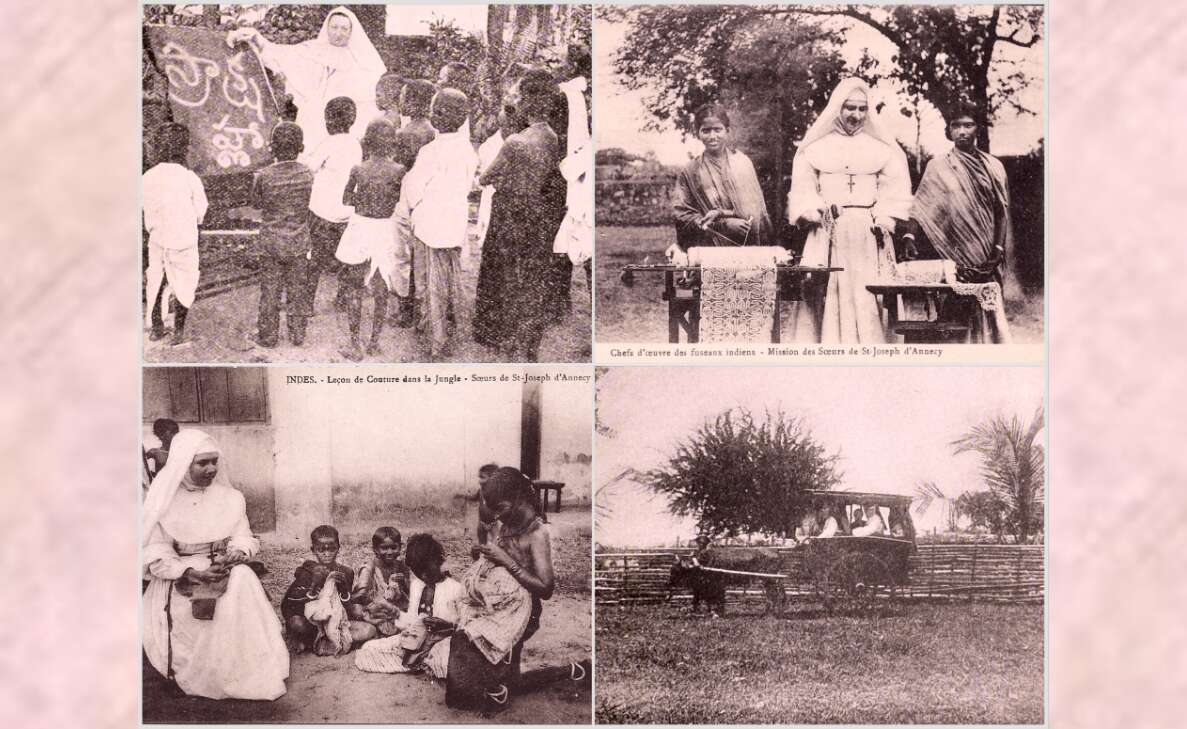
The Sisters of St Joseph used this opportunity to educate the women at their leisure. They taught women about prayerful life, to bring up children in good character, nutrition, personal hygiene and behaviour. Their children were able to study because the parents could support the children by providing nutritious food besides clothes and books.
From a school established to help educate the children of Roman Catholic families based in old Vizag, St Joseph’s Convent grew to educate Telugu girls in Waltair. The school for the families of the Madras Railway and Bengal Nagpur Railway at Waltair has grown as St Joseph’s Girls High School which continues to operate to this day. It is one of the oldest institutions in Visakhapatnam and India set up exclusively for girls. St Joseph’s Women’s College (affiliated with Andhra University) was added in 1958 and the strong education tradition continues. Over the past 170 years, the Sisters of St Joseph of Annecy at the Waltair Convent have expanded their education and charitable work to schools, crèches, orphanages and dispensaries in several parts of Andhra Pradesh, Orissa, Tamil Nadu, Karnataka and Kerala.
Should you have an anecdote or history on Vizag, the author would appreciate you contacting him at jcastell@ozemail.com.au
Written by John Castellas whose family belonged to Vizag for five generations. Educated at St Aloysius, migrated to Melbourne, Australia in 1966, former General Manager of Engineering at Boeing & Qantas Airways, in retirement Lecturers in Aviation Management at Swinburne University and is a Vizag aficionado.
Stay tuned to Yo! Vizag website and Instagram for more heritage stories.


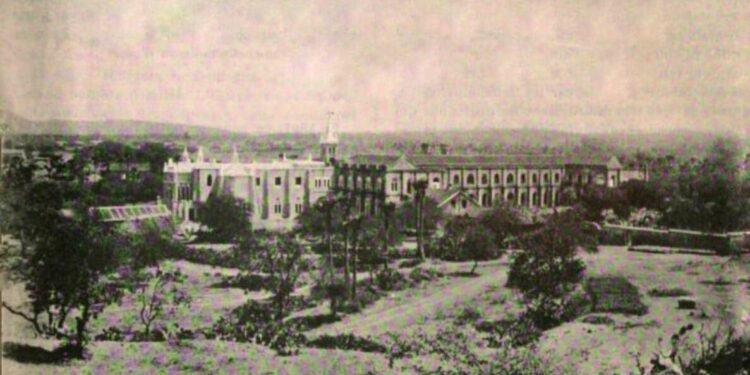







Discussion about this post